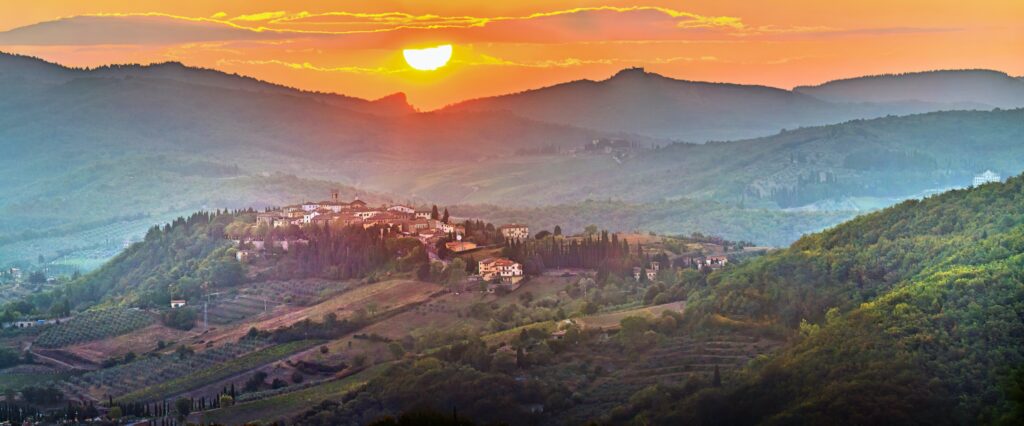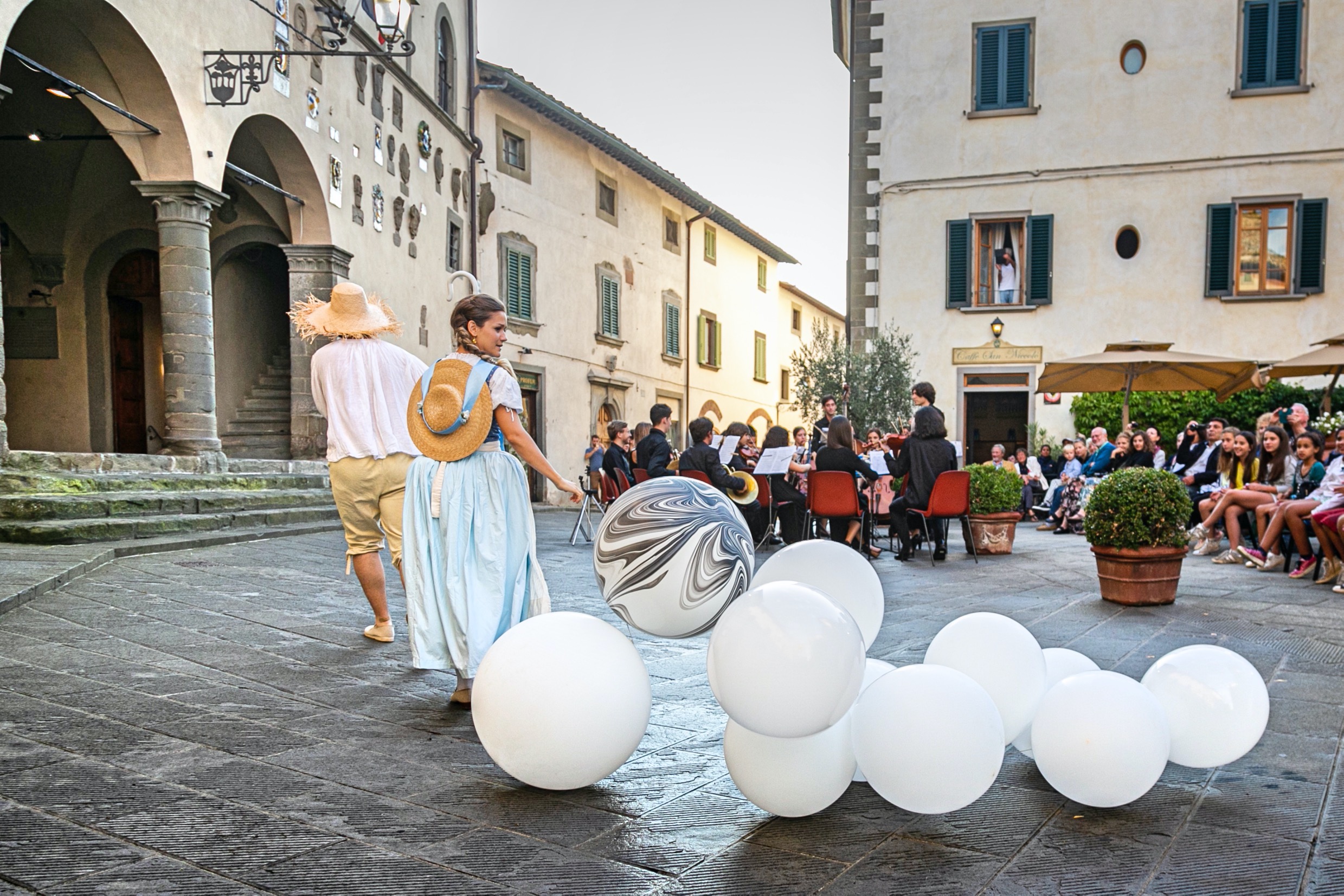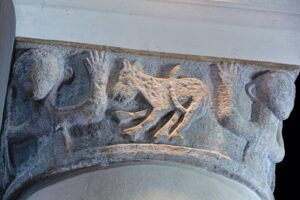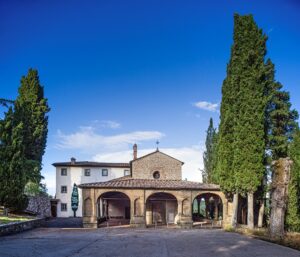We go in search of the amazing historical and architectural heritage of Radda in Chianti accompanied by the eyes and knowledge of two of its most exceptional citizens: Mayor Pierpaolo Mugnaini and Architect Daniele Barbucci, town planning councillor with responsibility for tourism. One can well understand how the character of this ancient village, a political bulwark on the border with the historical territory of Siena, is eminently linked in its ancient friendship with the city of Florence.
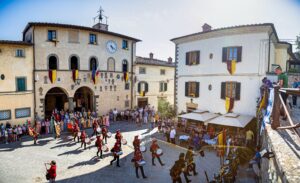 The Municipality of Radda in Chianti actually represents, through tradition and form, a rather up-to-date model of life and hospitality, where there is a right time and a right ‘distance’: “I remember the words of Prof. Giovanni Klaus Koenig, designer and architectural historian, begins Dr. Mugnaini, who spoke of the changing nature of the Tuscan landscape as an Eden in which to catch your breath. If we think about this model of landscape development, it presents a perfect complementarity and dynamism between man and nature: a fair balance between oaks, chestnuts, vineyards, cultivated and uncultivated land, human settlements, farmed and wild animals.
The Municipality of Radda in Chianti actually represents, through tradition and form, a rather up-to-date model of life and hospitality, where there is a right time and a right ‘distance’: “I remember the words of Prof. Giovanni Klaus Koenig, designer and architectural historian, begins Dr. Mugnaini, who spoke of the changing nature of the Tuscan landscape as an Eden in which to catch your breath. If we think about this model of landscape development, it presents a perfect complementarity and dynamism between man and nature: a fair balance between oaks, chestnuts, vineyards, cultivated and uncultivated land, human settlements, farmed and wild animals.
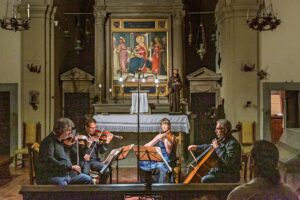 This relationship between isolation and openness is a sort of compromise that finds perfect fulfillment in our land.” Grand Duke Leopold II himself stated that Radda was a place “where you would have gone if you really had to go somewhere.”
This relationship between isolation and openness is a sort of compromise that finds perfect fulfillment in our land.” Grand Duke Leopold II himself stated that Radda was a place “where you would have gone if you really had to go somewhere.”
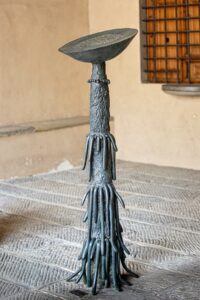 So you need a reason to come here. A valid reason that the first English expats found in the 1970s who started what became the myth of Chiantishire. The relationship of the international community with the local population has grown over the years and has created a unique social and cultural model of development and mutual cooperation. Without forgetting that the first agritourism businesses started back in those years.
So you need a reason to come here. A valid reason that the first English expats found in the 1970s who started what became the myth of Chiantishire. The relationship of the international community with the local population has grown over the years and has created a unique social and cultural model of development and mutual cooperation. Without forgetting that the first agritourism businesses started back in those years.
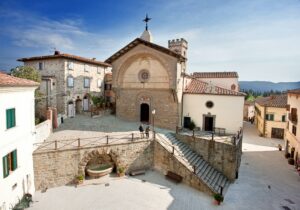 “Radda in Chianti, continues Dr. Barbucci, is the only municipality in the Sienese Chianti to have a Palazzo del Podestà with its dungeons, as symbol and emanation of Florentine power. This was the place of Mayor Francesco Ferrucci, hero of Florentine liberty. The famous legend of il Gallo Nero [the Black Rooster, the symbol of Chianti, from the story that the border between Siena and Florence would be decided by where single knights met leaving at dawn. Siena chose a white rooster and fed him well to crow strongly at daybreak, while the crafty Florentines’ Black Rooster was left hungry so got up much earlier, tr.] originated from these parts, to the advantage of the Florentine knight awakened by the brave feathered fellow in the early morning. “We also have a very important pre-Italian unfication historical archive that starts from the 15th century, rather popular with academics,” he explains.
“Radda in Chianti, continues Dr. Barbucci, is the only municipality in the Sienese Chianti to have a Palazzo del Podestà with its dungeons, as symbol and emanation of Florentine power. This was the place of Mayor Francesco Ferrucci, hero of Florentine liberty. The famous legend of il Gallo Nero [the Black Rooster, the symbol of Chianti, from the story that the border between Siena and Florence would be decided by where single knights met leaving at dawn. Siena chose a white rooster and fed him well to crow strongly at daybreak, while the crafty Florentines’ Black Rooster was left hungry so got up much earlier, tr.] originated from these parts, to the advantage of the Florentine knight awakened by the brave feathered fellow in the early morning. “We also have a very important pre-Italian unfication historical archive that starts from the 15th century, rather popular with academics,” he explains. 
Furthermore, from around the early 1900s there is the Grand Ducal icehouse, perhaps a reconstruction of a pre-existing structure: ice was brought from the farms to the holdings of the city, covered with straw.
The relationship with Florence has always remained privileged even after the move to the Province of Siena: “We definitely don’t speak Sienese!” The Mayor laughs.
The thirteenth century Propositura di San Niccolò with its neo-Romanesque façade designed by Adolfo Coppedè is very beautiful and the Lion Fountain in the main street of the town is magnificent and imperial. Also worth visiting is the Church of Santa Maria al Prato, in rural Romanesque style and with fine stone masonry: “It was built on an important area from the symbolic-religious point of view and dedicated to the Madonna. In the eighteenth century the Convent started there that is currently the seat of the Foundation for the Protection of Chianti Classico.”
 The Pieve di Santa Maria Novella is one of the first parish churches in the area which unites the authority of three dioceses (Fiesole, Volterra and Arezzo); recently restored, it preserves eighteenth-century frescoes that are well worth a visit. Witnesses to the Etruscan era can be seen in the archaeological site of Poggio alla Croce with traces of masonry and perimeters of buildings. The Borghetto di Volpaia of medieval memory, finally, preserves some picturesque walls. These are some of the historical signatures left by men who dwelt in the territory of Radda in Chianti. Others you can discover by going into this land that crosses the borders of time.
The Pieve di Santa Maria Novella is one of the first parish churches in the area which unites the authority of three dioceses (Fiesole, Volterra and Arezzo); recently restored, it preserves eighteenth-century frescoes that are well worth a visit. Witnesses to the Etruscan era can be seen in the archaeological site of Poggio alla Croce with traces of masonry and perimeters of buildings. The Borghetto di Volpaia of medieval memory, finally, preserves some picturesque walls. These are some of the historical signatures left by men who dwelt in the territory of Radda in Chianti. Others you can discover by going into this land that crosses the borders of time.
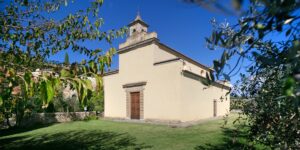
Info: Pro Loco Radda Information Office, Piazza Castello, Tel. 0577 738494 (Silvia Brogi)/ proradda@chiantinet.it/ www.comune.radda-in-chianti.si.it / www.visitchianti.net

